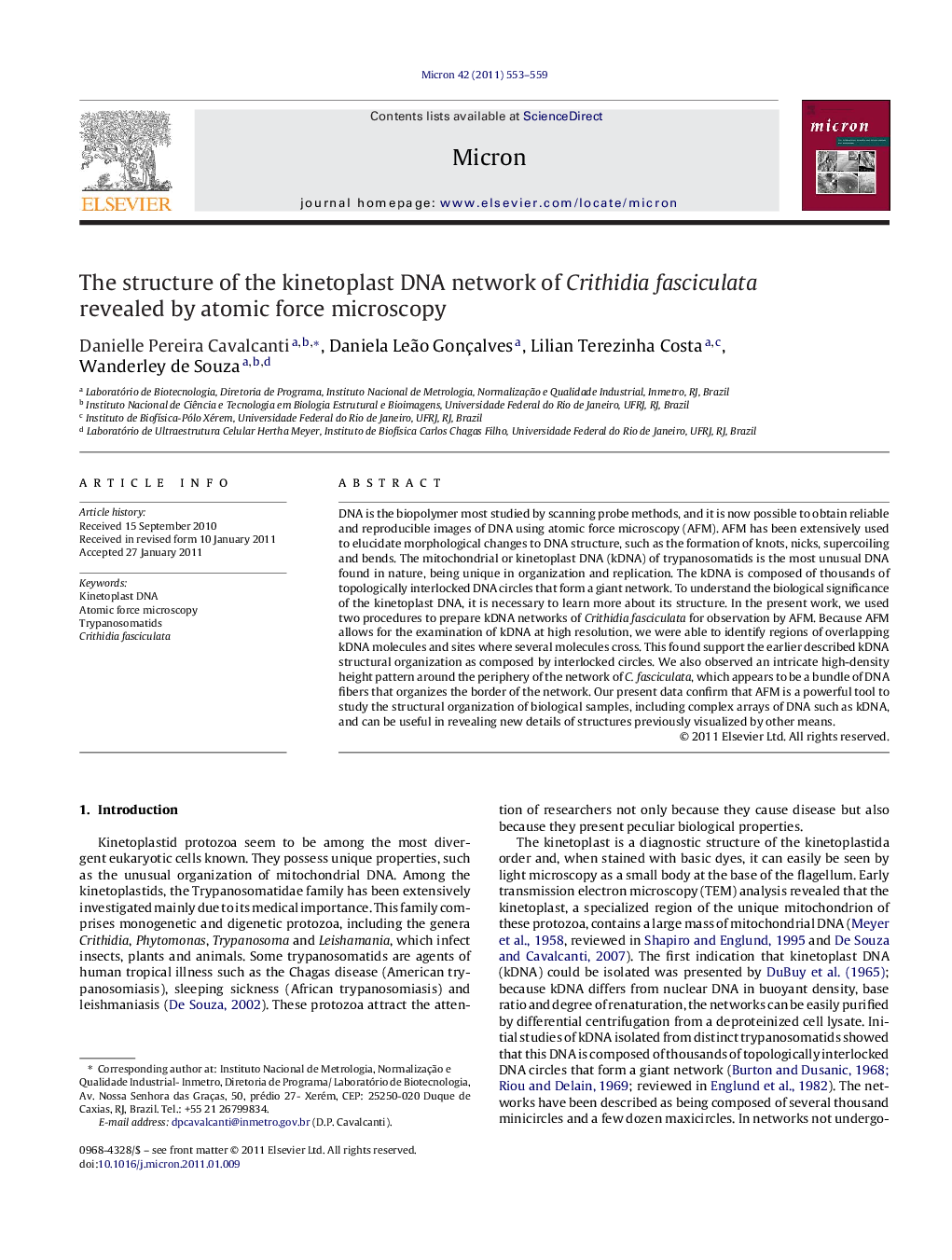| Article ID | Journal | Published Year | Pages | File Type |
|---|---|---|---|---|
| 1589130 | Micron | 2011 | 7 Pages |
DNA is the biopolymer most studied by scanning probe methods, and it is now possible to obtain reliable and reproducible images of DNA using atomic force microscopy (AFM). AFM has been extensively used to elucidate morphological changes to DNA structure, such as the formation of knots, nicks, supercoiling and bends. The mitochondrial or kinetoplast DNA (kDNA) of trypanosomatids is the most unusual DNA found in nature, being unique in organization and replication. The kDNA is composed of thousands of topologically interlocked DNA circles that form a giant network. To understand the biological significance of the kinetoplast DNA, it is necessary to learn more about its structure. In the present work, we used two procedures to prepare kDNA networks of Crithidia fasciculata for observation by AFM. Because AFM allows for the examination of kDNA at high resolution, we were able to identify regions of overlapping kDNA molecules and sites where several molecules cross. This found support the earlier described kDNA structural organization as composed by interlocked circles. We also observed an intricate high-density height pattern around the periphery of the network of C. fasciculata, which appears to be a bundle of DNA fibers that organizes the border of the network. Our present data confirm that AFM is a powerful tool to study the structural organization of biological samples, including complex arrays of DNA such as kDNA, and can be useful in revealing new details of structures previously visualized by other means.
Research highlights► We used two procedures to analyze the kDNA network using atomic force microscopy (AFM). ► The appearance of the network varied according to the procedure used to dry it. ► The results confirmed that the kDNA is composed by circular molecules interlocked. ► A high-density height pattern around the periphery of the network was observed. ► AFM is useful in elucidating the structural organization of complex arrays of DNA.
